How to make hardtack relates directly to the creation of a durable, long-lasting biscuit ideal for prolonged storage and providing essential nourishment in survival situations. It is also known as the original MRE (meals ready to eat) because Its longevity and simple ingredients make it an ideal option for long-term storage. It’s also a great source of sustenance during emergencies.
To make hardtack, mix flour, salt and water into a stiff dough. Roll it out, cut squares, and poke it with a fork. Bake it at 375 °F for 30 minutes until lightly browned, and you’re done!
Easy to make… right? Absolutely. But don’t be fooled, there’s more to this humble biscuit than meets the eye.
So, don’t go anywhere! Let’s learn how to make hardtack. We’re about to dive into the exciting world of hardtack, revealing tips and secrets that’ll take your survival food game to a new level. Read on to discover more.

In This Guide
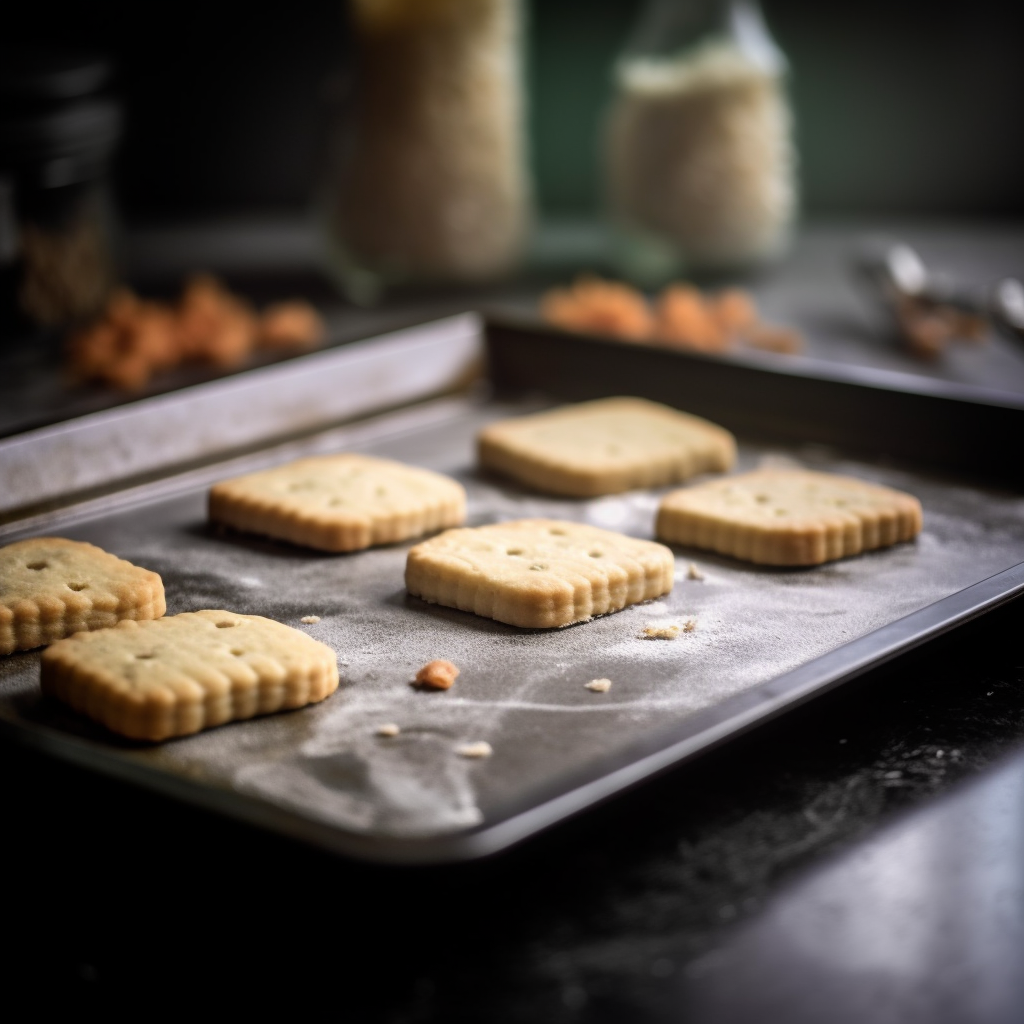
What Is Hardtack?
Hardtack is a simple, long-lasting cracker made from flour and water. It is also known as hardtack biscuits, crackers, bread, tooth dullers, or ship’s biscuits.
From seafaring voyages to military campaigns, hardtack has played a significant role in history, providing sustenance to sailors, soldiers, and pioneers during their extensive explorations and battles.
Its hard, cracker-like texture may seem unappealing, but it has sustained many when other food options were unavailable.
Don’t expect it to taste like your favorite snack. Hardtack is traditionally a very hard, thick cracker that is slightly salty with a bland flavor. However, when coupled with stews or soups, it can become quite appetizing, as it soaks up the surrounding flavor and its texture softens.
Warning: There is a reason it is called hardtack, consuming it alone could crack a tooth. The best way to enjoy hardtack is soaked in liquids, such as soup, stew, coffee, tea or water. Similar to how one might dip a biscotti or other hard cookie into coffee.
If you’re not a fan of the bland flavor, don’t worry. Read on to learn how to make hardtack a bit tastier.
Quick History Of Hardtack

The rich history of hardtack stretches from ancient seafaring ventures to its role as a crucial ration alongside salt pork and corned beef during the American Civil War. Nobody knows when it was actually invented, but there are pieces of hardtack dating back over 6,000 years ago.
It was the mainstay on long sea voyages during the Age of Exploration, nourishing sailors on ships like Columbus and Magellan.
In the United States, hardtack played a significant role during the American Civil War. It was a staple food for both Union and Confederate soldiers during the war. Early American settlers and pioneers also consumed it as they ventured westward.
So as you can see, this humble biscuit has been a quiet hero in history’s background, always ready when a durable, reliable food source was needed.
What You Need To Make Hardtack At Home
The process of learning how to make hardtack at home requires minimal ingredients: primarily flour and water, with an optional addition of salt for enhanced flavor. Other than that, here are the materials needed:
- Mixing bowl
- Measuring cups and spoons
- Wooden spoon or spatula
- Rolling pin
- Cookie cutter or knife
- Fork or skewer
- Baking sheet
- Parchment paper or silicone baking mat
- Oven mitts
- Cooling rack
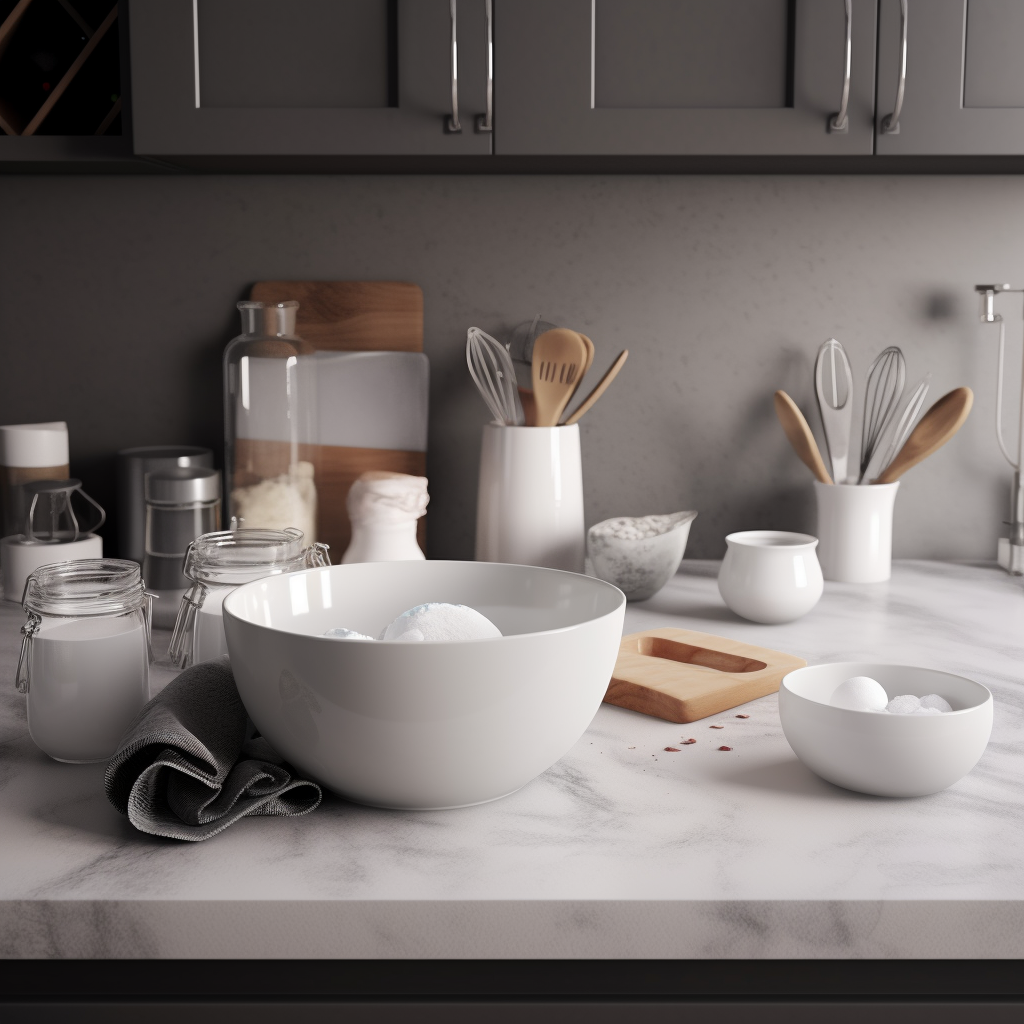
3 Recipes On How To Make Hardtack
Hardtack comes in with traditional, modern, and sweet variations to suit diverse preferences and nutritional needs.
1. Traditional Hardtack Recipe
The traditional hardtack recipe involves basic ingredients like flour and water, yielding a baked biscuit robust enough for lengthy preservation and portability.
Ingredients:
- 2 cups of all-purpose flour
- 1 cup of water
- 1 1/2 Teaspoons Salt (Optional)
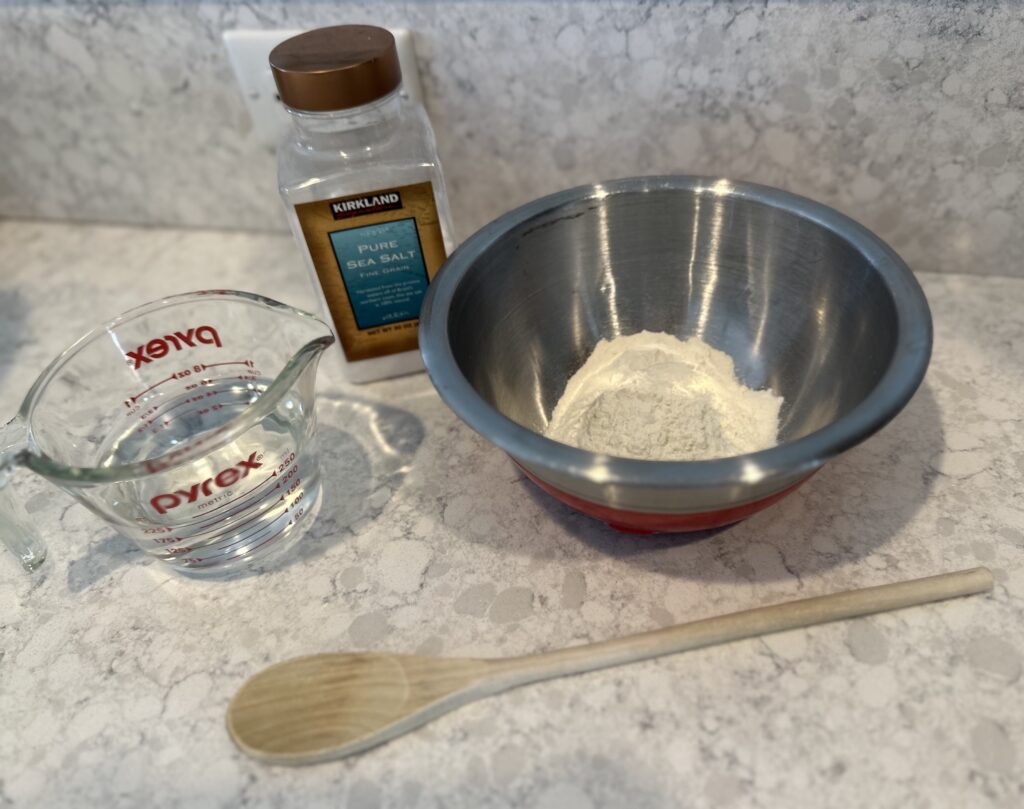
Instructions:
- Preheat your oven to 375°F (190°C).
2. Mix the flour and water in a bowl until a stiff dough forms. You may need to adjust the flour or water to achieve the correct consistency.
3. Roll the dough out on a floured surface until it’s about 1/4-inch thick.
4. Cut the dough into squares or rectangles and poke holes using a fork or skewer in each piece to allow it to cook evenly and prevent it from puffing up. The holes will also help moisture evaporate which is what you want.
5. Transfer the pieces to a baking sheet and bake for 30-40 minutes or until the edges are golden brown. Flip the hardtack halfway through the baking time to ensure even cooking.
6. Remove the hardtack from the oven and let it cool completely on a wire rack. Once cooled, store the hardtack in an airtight container in a cool, dry place.
2. Modern Hardtack Recipe
The modern hardtack recipe integrates additional items like millet, offering a flavorful twist and augmented nutritional content to the conventional cracker formula.
This modern recipe for hardtack incorporates a few tweaks for a more flavorful and enjoyable alternative to the traditional version.
Although not as long-lasting as the original recipe, it’s still quite durable. Plus, it’s perfect for outdoor adventures or emergency food supplies.
Ingredients:
- 2 cups whole wheat flour
- 1 cup all-purpose flour
- 1/2 cup cornmeal
- 1/2 cup rolled oats
- 1/4 cup sugar
- 1/2 teaspoon salt
- 1/2 teaspoon baking powder
- 1/2 cup vegetable oil or melted butter
- 3/4 cup water (adjust as needed)
Instructions:
- Preheat your oven to 350°F (175°C) and line a baking sheet with parchment paper or a silicone baking mat.
2. In a large mixing bowl, combine the whole wheat flour, all-purpose flour, cornmeal, rolled oats, sugar, salt, and baking powder. Mix well to ensure all the ingredients are evenly distributed.
3. Add the vegetable oil or melted butter to the dry ingredients and mix until you have a crumbly texture.
4. Gradually add water to the mixture, stirring until a stiff dough forms. You may need to adjust the amount of water slightly depending on the flour types and humidity.
5. Transfer the dough onto a lightly floured surface and roll it out to a thickness of about 1/4 inch.
6. Cut the dough into 3-inch squares approximately, or use a cookie cutter for different shapes.
7. Use a fork or skewer to poke holes in each hardtack piece. This helps with even baking and prevents puffing up during the process.
8. Place the hardtack pieces onto a baking sheet. Leave some space between them for even baking.
9. Bake for 25-30 minutes or until the edges begin to brown. Flip the hardtack pieces halfway through baking to ensure even cooking.
10. Remove the hardtack from the oven and let it cool completely on a wire rack. Once cooled, store it in an airtight container in a cool, dry place.
Check out this video on how to make hardtack (ship biscuits) to learn more.
H/T @townsends
3. Sweet Hardtack Recipe
Indulge in a sweet hardtack recipe, combining classic elements with appealing additives, ensuring a pleasurable taste alongside essential sustenance.
For those who prefer a sweeter take on hardtacks, this recipe offers a tasty twist on the classic survival food.
The added sugar and spices provide a pleasant flavor, making it more enjoyable to eat.
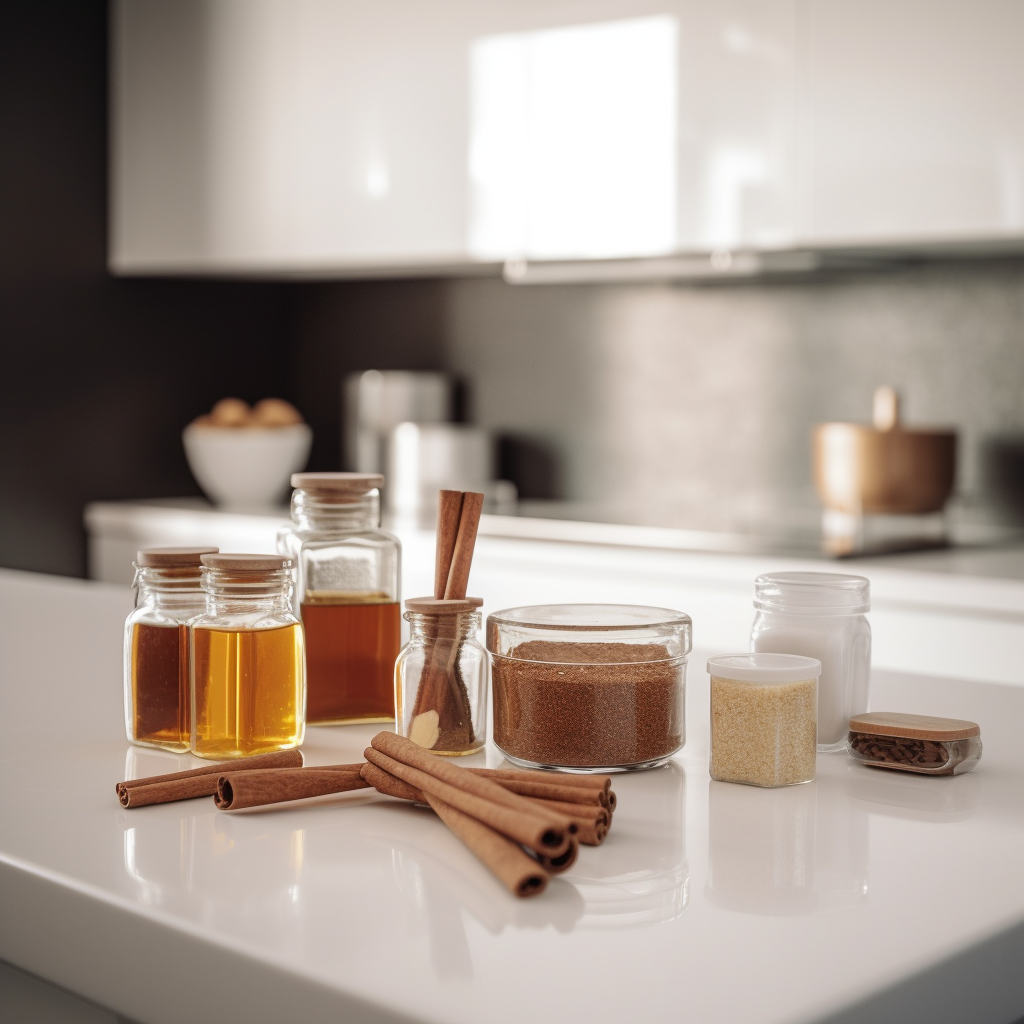
Ingredients:
- 3 cups all-purpose flour
- 1 cup granulated sugar
- 1/2 teaspoon salt
- 1/2 teaspoon baking powder
- 1/2 teaspoon ground cinnamon
- 1/4 teaspoon ground nutmeg
- 1/4 teaspoon ground allspice
- 1/2 cup cold unsalted butter, cut into small pieces
- 1/2 cup cold water
Instructions:
- Preheat your oven to 350°F (175°C). Line a baking sheet with parchment paper or a silicone baking mat.
2. In a large mixing bowl, whisk together the flour, sugar, salt, baking powder, cinnamon, nutmeg, and allspice.
3. Add the cold butter pieces to the dry ingredients. Using a pastry cutter or your fingertips, work the butter into the flour mixture until it resembles coarse crumbs.
4. Gradually add the cold water to the flour mixture while stirring with a wooden spoon or spatula. Continue to mix until a dough forms. If the dough is too dry, add a little more water, one tablespoon at a time, until it comes together.
5. On a lightly floured surface, roll out the dough to a thickness of about 1/4 inch (0.6 cm). Use a cookie cutter or a sharp knife to cut the dough into desired shapes and sizes.
6. Transfer the hardtack biscuits to the prepared baking sheet. Use a fork or skewer to poke holes in each biscuit.
7. Bake the sweet hardtack for 20-25 minutes or until the edges are lightly golden. Rotate the baking sheet halfway through the baking time for even baking.
8. Remove the baking sheet from the oven and let the hardtack biscuits cool on the baking sheet for a few minutes. Transfer them to a wire rack to cool completely.
9. Store the sweet hardtack in an airtight container at room temperature. Sweet hardtack should still keep well for several months to a year when stored properly. Enjoy this sweet treat as a tasty alternative to the classic hardtack recipe.
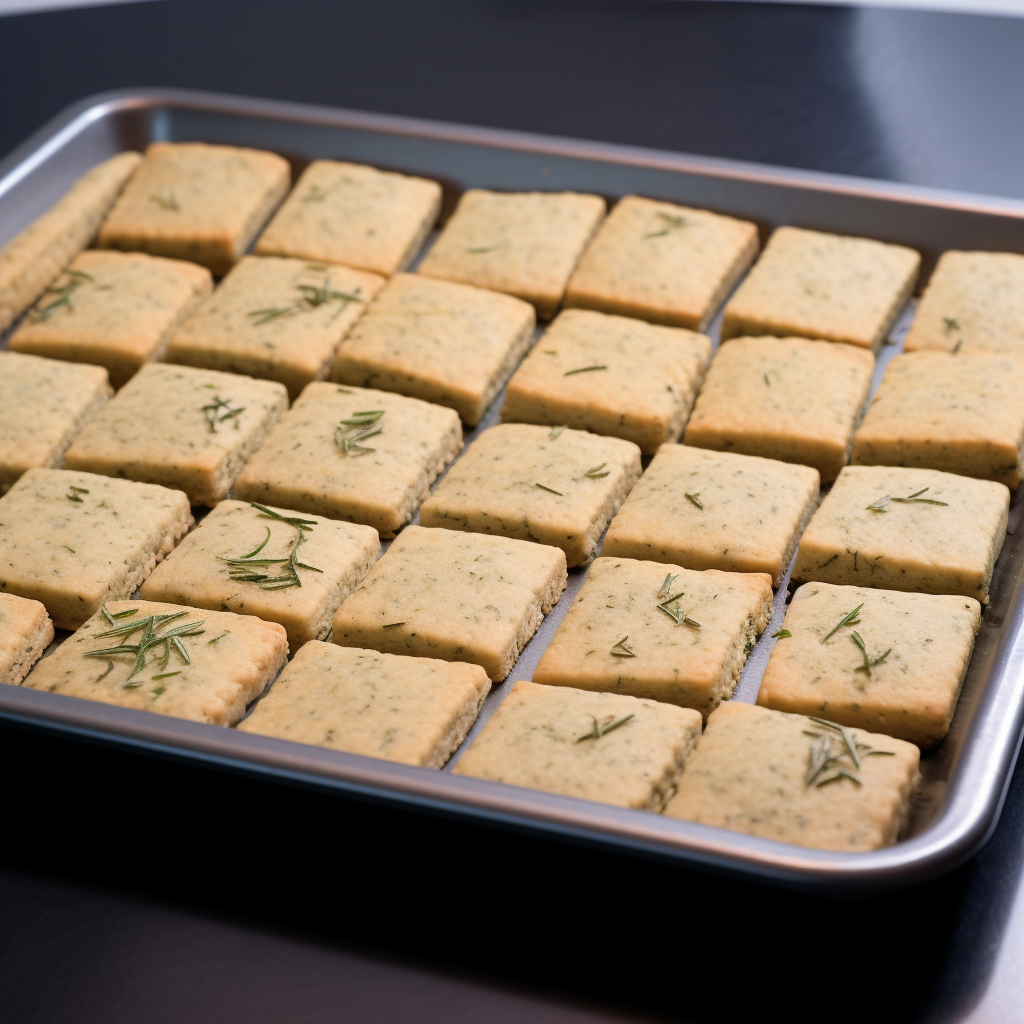
Enhancing Hardtack Palatability
Making hardtack with minimal ingredients is what gives hardtack a long shelf life. However, learning inventive techniques to enhance your hardtack bread can transform it into an enjoyable meal complemented by water crackers and other savory accompaniments.
Here are some ingredients that you can add to your hardtack recipe to make it taste better:
- Sugar or honey. A small amount can provide a touch of sweetness to your hardtack. Don’t add too much, as it could reduce the shelf life.
- Cinnamon or nutmeg. Spices like cinnamon and nutmeg can add a pleasant aroma and flavor to your hardtack. Use them sparingly to avoid overpowering the taste.
- Dried fruits. Chopped raisins, cranberries, or apricots can be added to the dough, giving the hardtack a fruity taste and some added texture.
- Nuts and seeds. Almonds, walnuts, sunflower seeds, or flaxseeds can provide extra flavor and texture. Use only unsalted nuts and seeds to maintain the hardtack’s longevity.
- Herbs. Dried herbs such as rosemary, thyme, or oregano can give your hardtack a savory twist.
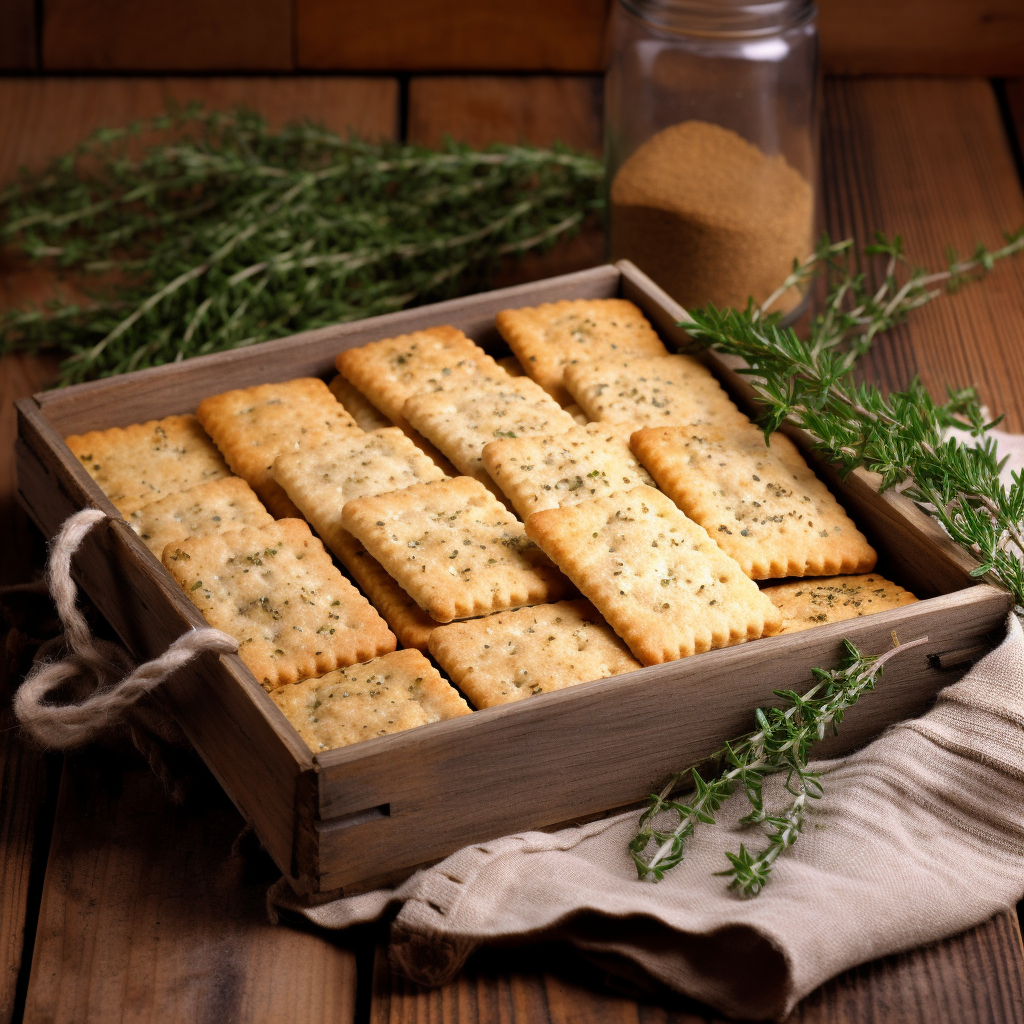
Nutritional Value Of Hardtack
As simple as hardtack may be, it’s crucial to understand its contributions to food energy, protein, and fiber, vital for maintaining energy levels and overall health. Here’s a breakdown of the nutrients found in our traditional, modern, and sweet hardtack recipes:
| Traditional Hardtack | Modern Hardtack | Sweet Hardtack | |
| Calories | 100 | 140 | 150 |
| Carbs | 21 g | 23 g | 25 g |
| Protein | 3 g | 4 g | 3 g |
| Fat | 0.5 g | 6 g | 6 g |
| Fiber | 1 g | 2 g | 1 g |
| Sugar | 0 g | 2 g | 8 g |
| Sodium | 25 mg | 50 mg | 50 mg |
| Potassium | 30 mg | 40 mg | 40 mg |
| Iron | 1 mg | 1 mg | 1 mg |
| Calcium | 10 mg | 20 mg | 20 mg |
| Vitamin A | 0 IU | 25 IU | 25 IU |
| Vitamin C | 0 mg | 0 mg | 0 mg |
*Note that these values are approximate. They also vary depending on the specific ingredients and recipes used.
5 Different Ways To Eat And Enjoy Hardtack
Here are five creative methods to savor hardtack, incorporating it into diverse meals, from pairing it with saltine crackers to more elaborate dishes, ensuring a satisfying dining experience.
- Soak it in liquid. Hardtack can be extremely hard and difficult to chew. To soften it, soak it in water, milk, coffee, tea, or soup. Allow it to sit for a few minutes until it reaches your desired consistency.
2. Fry it. Frying soaked hardtack in a little oil or butter can add flavor and improve its texture. Fry each side until golden brown, and serve it as a side dish or a quick snack.
3. Crumble it into dishes. Hardtack can be crumbled into stews, soups, or chowders, adding bulk and carbohydrates to the meal.
4. Use as a base for toppings. Spread softened hardtack with butter, jam, peanut butter, or cheese to enhance its taste.
5. Sweeten it. Sprinkle sugar or drizzle honey, maple syrup, or molasses on softened hardtack to create a simple dessert.
*Reminder: Hardtack is meant to be a survival food, so it may not be as delicious as other types of bread. But with some creativity, you can make it more enjoyable to eat.

Tips For Storing Hardtack For Long-Term Storage
Hardtack has a long 25-year shelf life but it’s important to store it for long-term use, safeguarding its quality and nutritional value, crucial for a reliable emergency food supply.
To ensure your hardtack stays fresh and safe to eat for as long as possible, follow these tips:
- Keep it dry. Ensure that the storage area is dry and free of humidity. Store hardtack in airtight containers, vacuum-sealed bags, or ziplock bags to keep moisture out.
- Store in a cool, dark place. Store it in places such as a pantry, cupboard, or cellar.
- Protect from pests. Use pest-proof storage containers, like metal or heavy-duty plastic, to prevent any infestations.
- Rotate your stock. If you have a large supply of hardtack, practice the “first in, first out” method. This means consuming the oldest hardtack first and adding new batches to the back of your storage area.
- Check for spoilage. Although hardtack has a long shelf life, it’s essential to periodically check for signs of spoilage. If you find any spoiled hardtack, discard it immediately.
Detecting Spoiled Hardtack
You must be adept at discerning the signs of spoiled hardtack, ensuring your stored supply remains safe, edible, and nutrient-rich. Here’s how to know your hardtack is unsafe to consume:
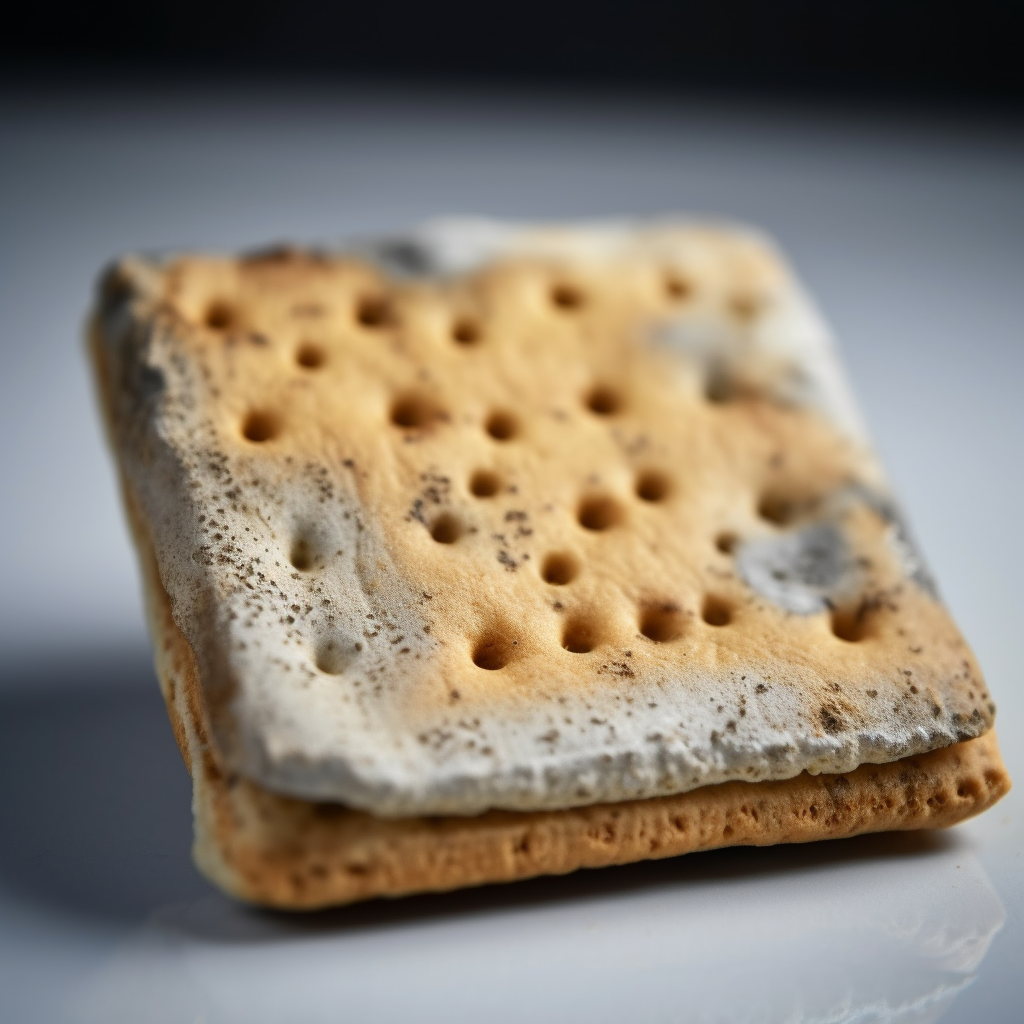
- Mold. Mold can appear as fuzzy spots or discoloration in various colors, such as green, white, or black.
- Unpleasant odor. A rotten or sour smell is another sign of spoilage. Fresh hardtack should have a neutral or slightly flour-like aroma.
- Soft or crumbly texture. Fresh hardtack should be very hard and dense. If your hardtack has become soft, crumbly, or moist, it’s likely that moisture has penetrated the hardtack biscuit. If this happens, discard it immediately.
- Discoloration. Look for any unusual color changes or dark spots on the surface of the hardtack. This could indicate mold growth or other forms of spoilage.
- Insect infestation. If you find small holes or signs of insects in your hardtack or its storage container, throw away the biscuits.
Maintain a fresh stock of hardtack by being vigilant and checking for signs of spoilage. Always discard any that looks off as it can potentially be harmful to your health.
Store-Bought Hardtack
For convenience, store-bought hardtack is available, providing the same long-lasting benefits without the need for home preparation. You can buy ready-made hardtack in some stores or online. These store-bought versions have the same qualities as the homemade version.
They’re usually available in vacuum-sealed packages to ensure freshness and can be a practical addition to your emergency food supply or for outdoor activities.
They are generally more uniform in size, shape, and taste than homemade hardtack. Some are fortified with vitamins and minerals to enhance their nutritional value.
However, be sure to check the expiration date to make sure you’re getting the freshest batch.
And remember, just because it’s store-bought doesn’t mean you can’t get creative with it. Spice it up, break it down, make it your own!
Where Can I Buy Hardtack?
You can buy hardtack from both online and in physical stores. Here are some options to consider:
- Specialty food stores
- Military surplus stores
- Maritime museums or historical sites
Remember to read the product descriptions and reviews to ensure you are purchasing the type of hardtack you want.
However, you can always make your own hardtack at home using the recipes provided in this article.
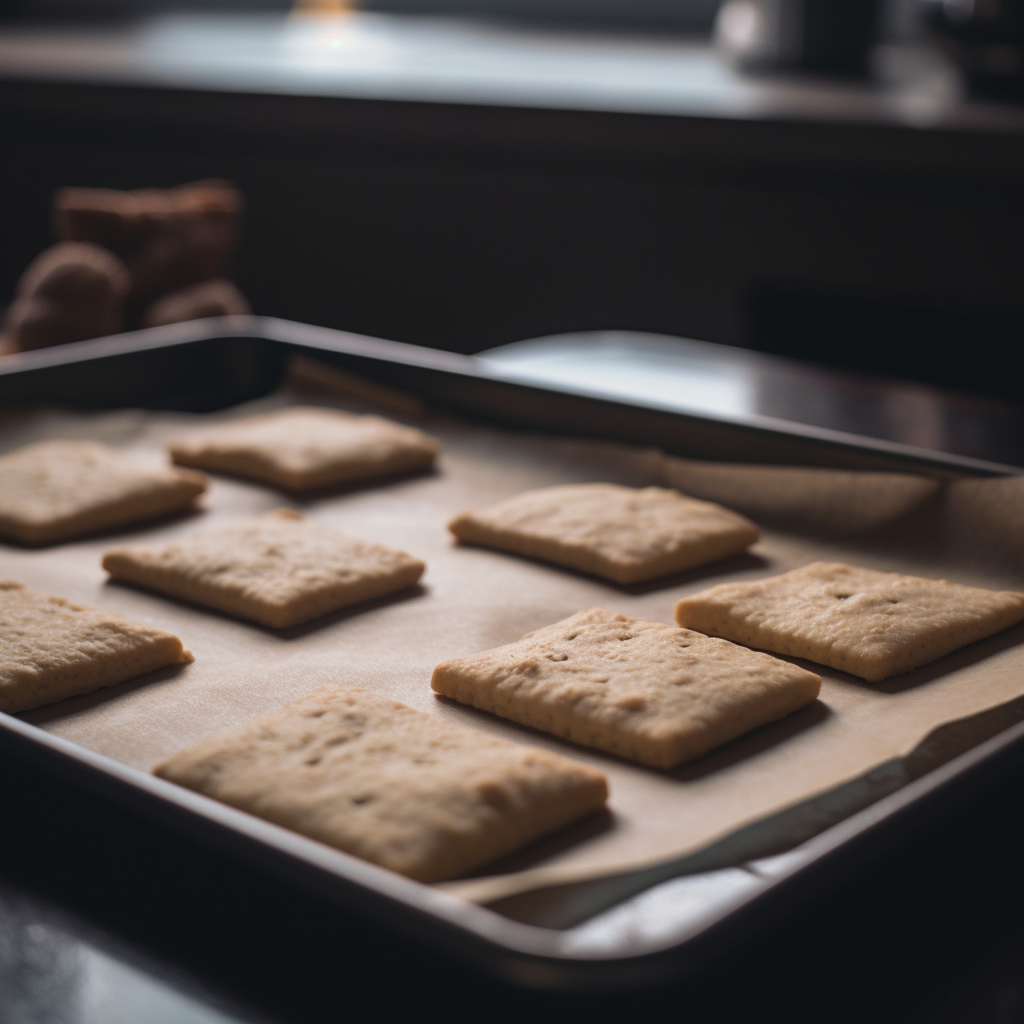
FAQs About How To Make Hardtack
How long will hardtack last?
Traditional Hardtack can last for 25 years or longer if stored correctly. Keep it in an airtight container in a cool, dark, and dry place to ensure its longevity.
How thick should hardtack be?
Hardtack should be around 1/4 to 1/2 inch thick. This thickness allows it to dry out thoroughly during baking, ensuring a long shelf life.
Does hardtack have any nutritional value?
Hardtack is primarily a source of carbohydrates, with some protein and minimal fat. But it lacks essential vitamins and minerals, so it’s best to eat it with other nutrient-dense foods.
Why doesn’t hardtack go bad?
Hardtack doesn’t spoil quickly because it has minimal moisture content. Bacteria and mold need moisture to grow, so the dry nature of hardtack prevents spoilage.
How To Make Hardtack gluten free?
Hardtack can be made gluten free by easily swapping regular flour for a gluten free option, such as almond, coconut or Bob’s Red Mill Gluten Free flour.
Can dogs eat hardtack?
Yes, dogs can eat hardtack biscuits. It is actually considered an early form of dog food, similar to a dog biscuit.

Wrap Up on How To Make Hardtack
Hardtack is a versatile and long-lasting food for long journeys and emergency situations.
Experiment with different recipes and serving suggestions to create an enjoyable hardtack survival food you and your family will enjoy.
When eating, always balance your consumption with other nutrient-rich foods for a well-rounded diet.
ABOUT THE AUTHOR
Angie Montgomery is the co-founder of Monday Day Prepping. She and her husband Bill have been "prepper's" since 2008. When she's not helping manage the homestead, she enjoys teaching her two boys how to cook and make natural alternatives to cleaners and other household items.


0 Comments